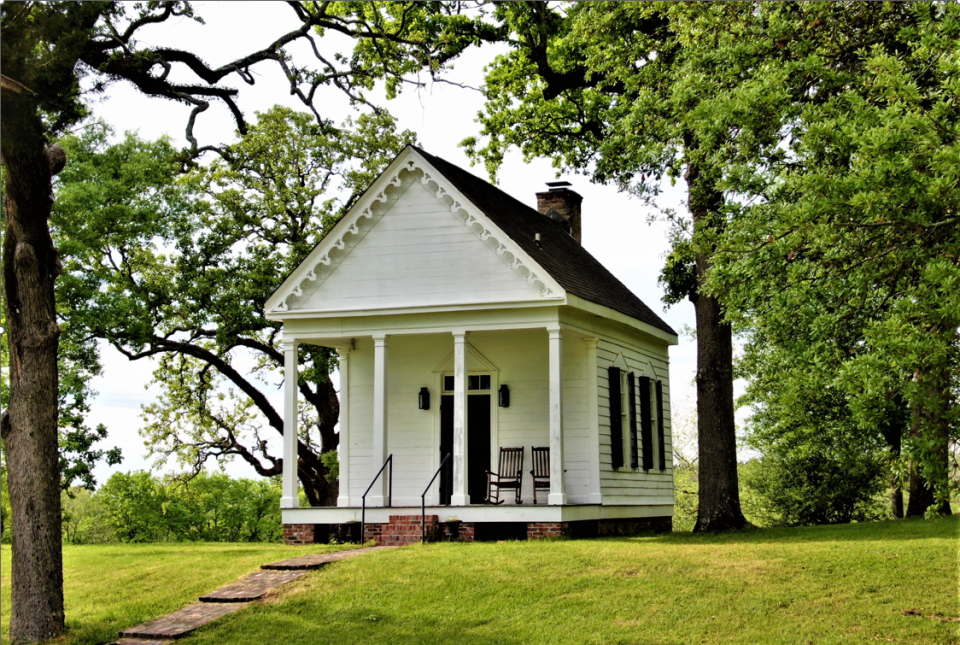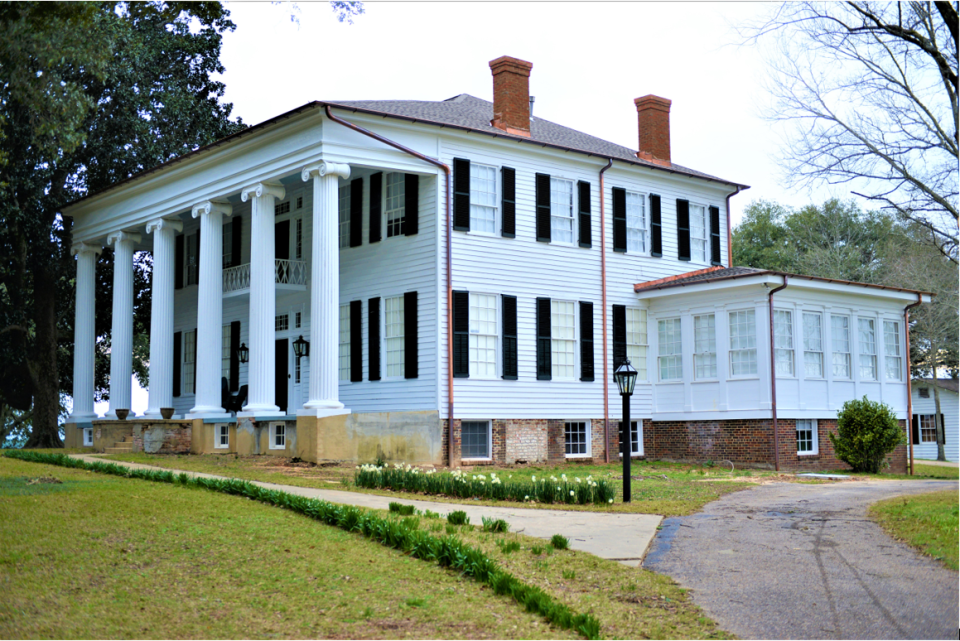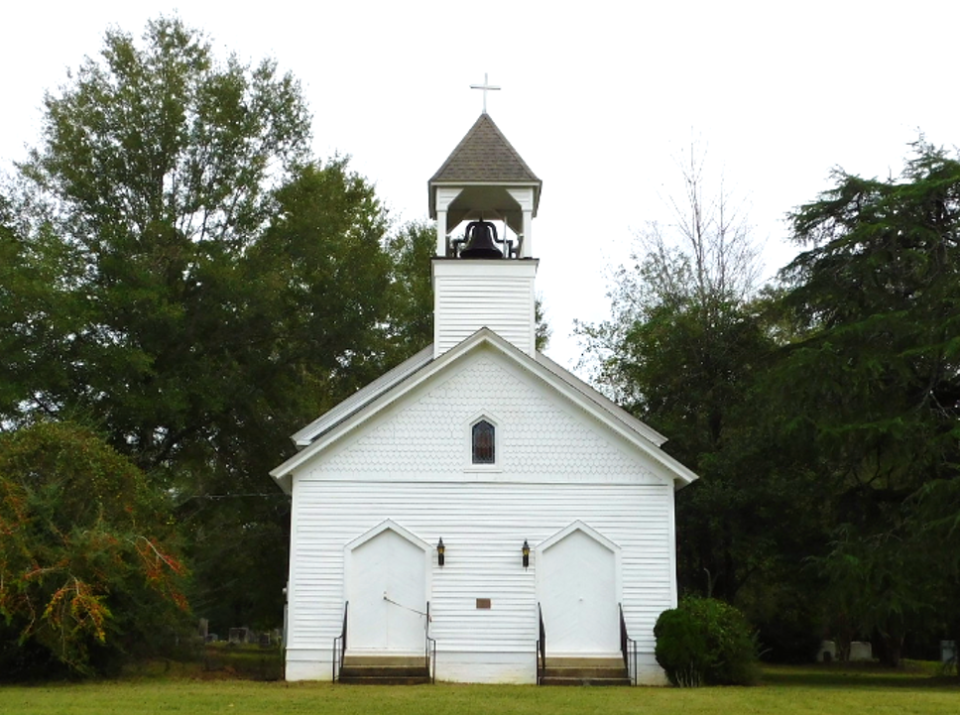History lesson: Greene County Tour of Homes highlights vintage houses, churches
The Greene County Historical Society will provide a window into the past Oct. 7-8 during the Tour of Homes, the society's annual fundraiser.
Homes included on the tour will be Thornhill, the Schoppert Cotton House, Magnolia on Main, and, for the first time on the tour, the John W. Elliott House. Churches included on the tour will be First Presbyterian Church, St. Mark's Episcopal Church in Boligee, Clinton Baptist Church and Ebenezer Presbyterian Church, which is also in Clinton.

Tickets can be purchased from 9 a.m. until 5 p.m. Oct. 7 and 10 a.m. until 3 p.m. Oct. 8 at the Vaughan Morrow House, 310 Main St. in Eutaw. Tickets cost $20 for adults and $10 for children younger than 12. Groups of 10 or more receive a reduced price of $15 per ticket.
Lunch will be available both days from 11 a.m. until 2 p.m. at the Vaughan Morrow House at a cost of $15 per plate.
All proceeds go to the preservation of historic homes in Greene County.
Here's a closer look at the homes and churches on the tour, with information provided by the Greene County Historical Society:
Thornhill
On Greene County Road 20, Thornhill is a plantation home that has remained in the family and today is owned by a direct descendant, Brock Jones. The Greek Revival house is set atop a hill overlooking the surrounding 1,800 acres of the plantation. The family cemetery is on the grounds and is the burial site of the builder. A renovated plantation schoolhouse, one of the few still existing, is next to the main house.
Located between Forkland and Boligee, Thornhill was built in 1833 by James Innes Thornton, Alabama's third secretary of state. The architect was William Nichols, who also served as architect of the University of Alabama.

Thornton, a member of a prominent Virginia family, was a cousin of George Washington. Four counties and the river are visible from the house. The six towering, fluted Ionic columns are a dramatic feature of the house. The interior is dominated by a central hallway and a spiral staircase that rises to the second floor.
The first-floor parlor, dining room and master bedroom suite all have 12-foot ceilings. Many antebellum homes are on city streets with modern lights and the sounds of the 21st century, but Thornhill, high on its hill with views of the fields and woods of the plantation, offers spectators a vision of life in another century.
Magnolia on Main
Magnolia on Main, owned by Judy Jarvis, was built at the beginning of the 20th century. William Scears owned the plantation home Glenville, which was about 3 miles from town. He built Magnolia on Main in 1904 as a townhouse for his family to make it more convenient for his children to attend school. The home was also used to entertain guests.
The house has a colossal portico and a center hall stairway It is said the stairway was designed by Mrs. Scears with the weddings of her daughters in mind.
The house was later owned by James Coleman, a longtime editor of the Greene County Democrat. His family was among the early settlers and builders of Eutaw.
Schoppert Cotton House
The Schoppert Cotton House was bought by the Greene County Historical Society to save it from demolition. Philip Schoppert was, as were so many of Eutaw's early citizens, a native of South Carolina. He is listed in the 1856 Snedecor's Directory as the builder.
The original house was similar to several other Eutaw houses but had Italianate overtones and chimneys reminiscent of the house of his native state.
Edward Ustick bought the house in 1899 and added the porch. The house had various owners until it slowly began to deteriorate. The house was saved by the historical society and basic renovations were done to preserve it. Ryan Montgomery has bought the house and is completing the restoration.
John W. Elliott House
The John W. Elliott House, a Creole College style structure, was built in 1850 by Jesse Gibson for John Williams Elliott, a watchmaker and jeweler. Elliott was born in 1814 in Litchfield County, Connecticut. He moved to Eutaw in 1840. He married Louisa Elizabeth Towner, a teacher and Vermont native in 1843. They had three children, all born and raised in Eutaw. Louisa died in 1853. After his second marriage, the Elliott family left Eutaw. The house was bought by Robert Emmett Watkins in 1857 and remained in the Watkins-Wilson-Banks family until 2002. It was sold to the Kyle family with the understanding it would be located on Eatman-Kyle farm outside of Eutaw.
Due to extensive termite damage, the house could not be moved. It had to be taken apart and assembled.
A replica of the building was made using as much of the original materials as possible. The facade exactly matches the original house. The current first floor plan is modeled on the original house, although the second floor was modified to accommodate the family's needs. The land once farmed by Andy Eatman is now owned by his grandsons, Chris and Drew Kyle.
The First Presbyterian Church
The First Presbyterian Church was founded in 1824 as the Mesopotamia Presbyterian Church in the small village of Mesopotamia, a mile west of what is now Eutaw. In the 1840s, the congregation decided to move to Eutaw, then the hub of economic activity. The present building was erected in 1851, and it was at this time that the name was changed to First Presbyterian Church.
Over the years, neither the exterior of the building nor the interior of the worship center has significantly changed. Due to its historical significance, it was added to the National Register of Historic Places in 1974. Services are held each Sunday.
St. Mark's Episcopal Church
St. Mark's Episcopal Church was built in 1854 at the Fork of Greene for area plantation owners and their families. Twenty-five years later, it was carefully disassembled and moved by oxcart to its present location in Boligee.

The church is noted for its beautiful woodwork. The church was listed on the Alabama Register of Landmarks and Heritage in March 2003. Services are held on the fourth Sunday of each month at 9 a.m.
Clinton Baptist Church
Clinton Baptist Church was organized in 1838 as Concord Baptist Church on nearby Trussells Creek. The membership grew in the late 1840s and 1850s. The growth and frequent flooding of Trussells Creek led to the construction of the church at the present site. It was completed and dedicated in 1858 and continued as an active church into the 21st century.
Ebenezer Presbyterian Church
Ebenezer Presbyterian Church and cemetery in Clinton is situated just about 8 miles northwest of Eutaw. Ebenezer was organized by the Tuscaloosa Presbyterians in 1820, and in 1852 the log cabin of the church was found inadequate to meet the needs of the congregation, and a comfortable frame building was erected instead. The unusual balcony across the back of the church and down each side was used by slaves. The church is no owned by the Greene County Historical Society, which completed restoration in 2004. It is currently rented to the First Baptist Church of Clinton for its weekly service.
This article originally appeared on The Tuscaloosa News: Tour highlights historic homes, churches in Greene County

